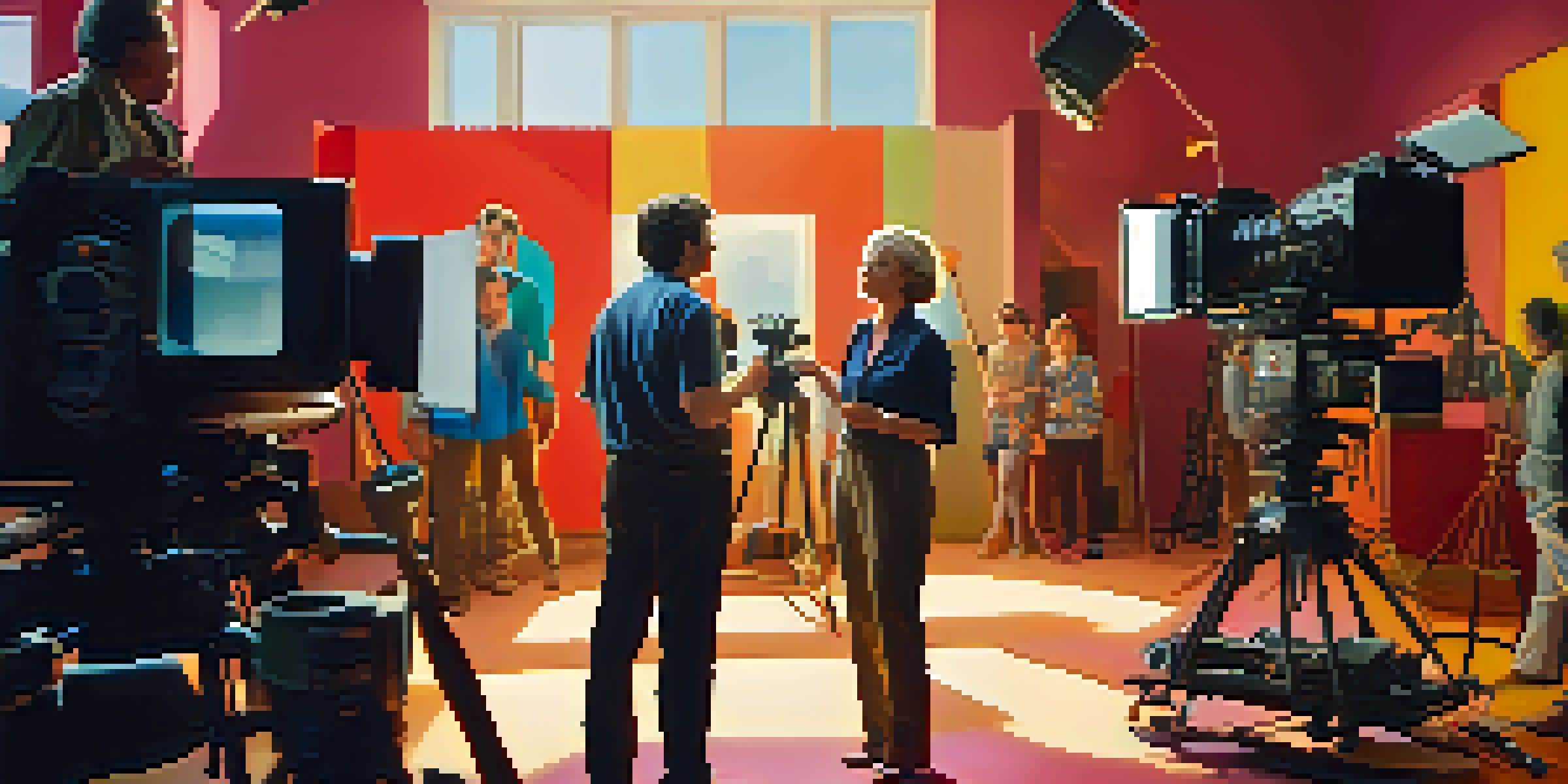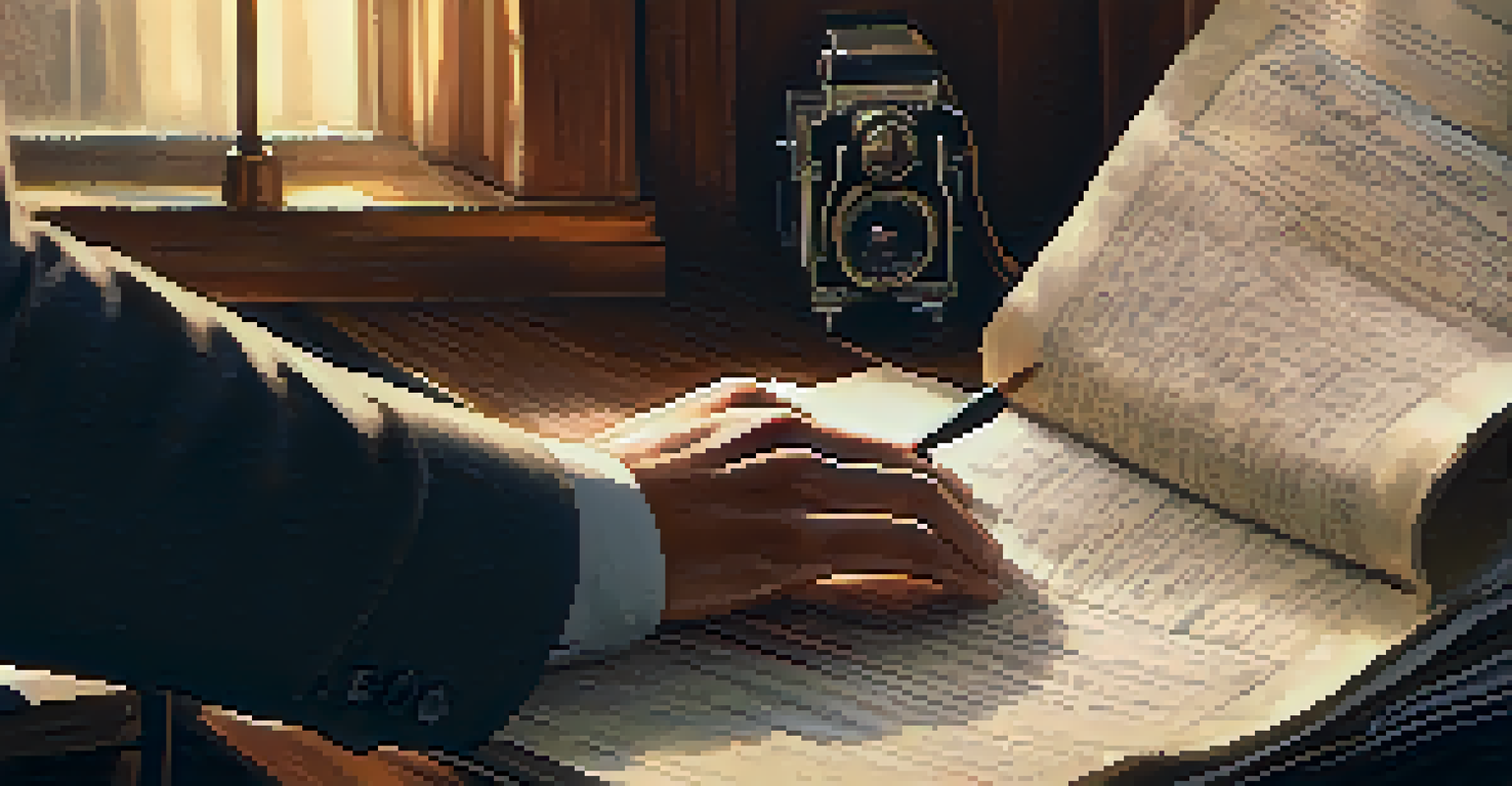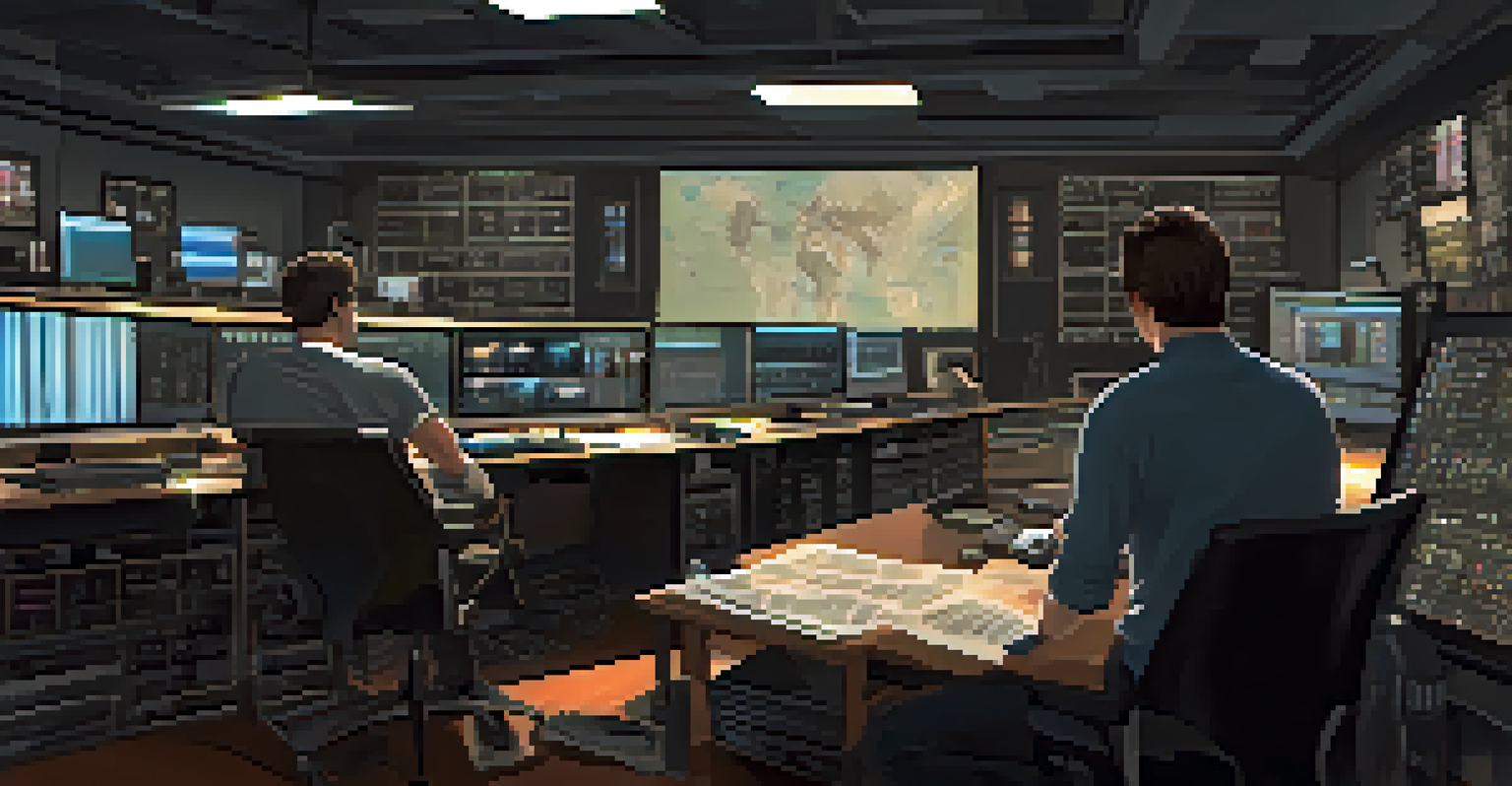Directors as Visionaries: Translating Scripts into Visual Art

The Role of a Director: More Than Just a Boss
When we think of movie directors, we often envision a commanding figure on set, calling the shots. However, a director's role goes far beyond mere management. They are the creative visionaries who interpret scripts and breathe life into them through visual storytelling.
A film is never really good unless the camera is an eye in the head of a poet.
Directors are responsible for shaping the film’s overall aesthetic, guiding actors, and collaborating with various departments like cinematography and production design. This requires a deep understanding of the script's themes and character arcs to ensure that every scene aligns with the intended message.
In essence, a director acts as the bridge between the written word and the audience’s experience, transforming scripts into cohesive visual narratives that resonate emotionally and intellectually.
Understanding the Script: The Foundation of Vision
Before any filming begins, a director must immerse themselves in the script. This involves not only reading the lines but also interpreting the underlying themes and emotions that drive the story. A great director delves into character motivations and relationships, ensuring they understand the narrative's essence.

Imagine a painter studying a canvas before applying their first brushstroke; a director approaches a script similarly. They highlight key moments, jot down ideas, and envision how each scene can be transformed into visual art. This thorough understanding lays the groundwork for every decision made on set.
Directors: Creative Visionaries
Directors go beyond management to interpret scripts and create visual narratives that resonate with audiences.
By treating the script as a living document, directors can adapt and adjust their vision as the project evolves, ensuring that the final product remains true to the story while also being visually stunning.
Casting: The Art of Finding the Right Talent
Once the script is understood, the next step for a director is casting. Finding the right actors is crucial, as their performances will ultimately convey the story’s emotions and themes. Directors often hold auditions and screen tests to assess not just talent, but also chemistry between actors.
Directing is not telling people what to do. It’s giving them a chance to do what they want to do.
Think of casting as assembling a puzzle; each actor is a piece that must fit perfectly to create the complete picture. A director's keen eye for talent allows them to envision how different personalities will bring characters to life on screen.
Moreover, effective casting can lead to unexpected brilliance. A lesser-known actor might deliver a stunning performance that aligns perfectly with the director's vision, creating a memorable cinematic experience.
Visual Storytelling: Creating a Unique Aesthetic
Visual storytelling is where a director's vision truly shines. They work closely with cinematographers and production designers to create a unique aesthetic that reflects the film's themes. This involves decisions about lighting, color palettes, and camera angles that can dramatically alter the viewer's perception.
For instance, a dark, moody lighting scheme can evoke feelings of tension and suspense, while bright, vibrant colors might convey joy and freedom. Directors often draw inspiration from various art forms, films, and cultural references to craft a visual style that is both engaging and meaningful.
Collaboration is Key
Successful filmmaking relies on open communication and teamwork among various departments to enhance the storytelling experience.
Ultimately, the goal is to create a seamless blend of visuals and narrative that captivates audiences, allowing them to immerse themselves fully in the story.
Collaboration: The Heart of Filmmaking
Filmmaking is inherently collaborative, requiring a director to work with a diverse team of professionals. From the cinematographer to the editor, every department plays a vital role in translating the script into visual art. A successful director fosters an environment of open communication and creativity, encouraging team members to share their ideas.
Think of it as a symphony; each musician contributes their unique sound to create a harmonious performance. Similarly, a director harnesses the strengths of their team to enhance the storytelling experience. This collaboration often leads to innovative solutions and unexpected creative choices.
By valuing and incorporating the input of their team, directors can elevate the film beyond their original vision, creating a richer and more dynamic viewing experience.
Editing: The Final Touches of a Director's Vision
Once filming wraps, the director's role shifts to the editing room, where the film begins to take its final form. This stage is crucial, as editing shapes the pacing, tone, and overall structure of the film. Directors work closely with editors to select the best takes, arrange scenes, and refine the narrative flow.
Editing can transform a collection of raw footage into a cohesive story. It allows the director to emphasize emotional beats, enhance comedic timing, and maintain viewer engagement. This process is where the director’s vision truly comes to life, as they make critical decisions that impact the audience's experience.
Editing Shapes the Final Film
The editing process is crucial for refining the film's pacing and structure, ultimately bringing the director's vision to life.
Ultimately, editing is the final opportunity for directors to ensure their artistic vision is realized, creating a polished and compelling film that resonates with viewers.
The Legacy of Directors: Shaping the Future of Film
The impact of a director extends far beyond their individual films; they help shape the future of cinema. By pushing creative boundaries and experimenting with new techniques, directors inspire future generations of filmmakers. Their unique styles and narratives often influence trends and set new standards within the industry.
For example, iconic directors like Alfred Hitchcock or Steven Spielberg have left indelible marks on filmmaking, redefining genres and storytelling approaches. Their work encourages emerging directors to think outside the box and explore uncharted territories in visual storytelling.

As visionaries, directors not only create art but also pave the way for innovation and change in the world of film, ensuring that cinema continues to evolve and captivate audiences for years to come.